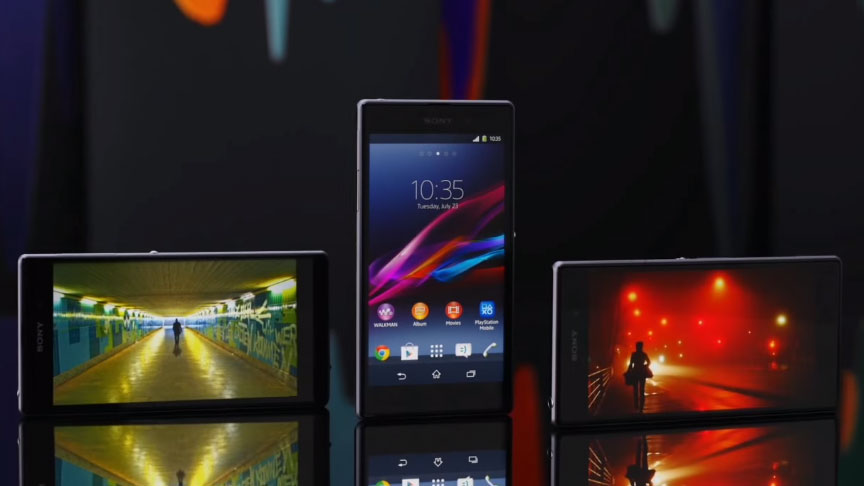Why you can trust TechRadar
The Sony Xperia Z1 comes with a super high-end 20.7MP camera sensor, and considering it's the same unit that you'll find on the newer Xperia Z2 it keeps this handset very near to the top of the hotly contested mobile megapixel charts.
And 90% of the time, the Xperia Z1 produces some of the finest photos I've seen come off a phone camera.
The camera app itself is a custom Sony creation, offering a simplified interface that defaults to Sony's Superior Auto mode.
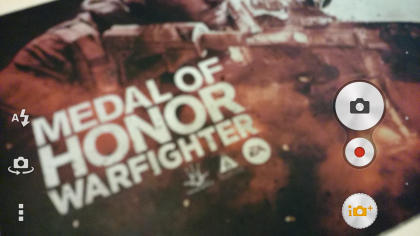
This streamlined setting lets you toggle the flash options (fill, auto, and red-eye reduction) on and off, plus there's one options tab to activate slightly more advanced features like the smile-detection tool, burst mode, geotagging, and the auto-upload feature, with the latter wanting to dump copies of your pics to Sony's own PlayMemories Online cloud server.
For more stuff to play with, Sony's added an Apps toggle to the camera, which currently houses the photo effect tools, manual mode, timeshift burst mode, panorama stitcher, its Info-eye augmented reality search tool and more.
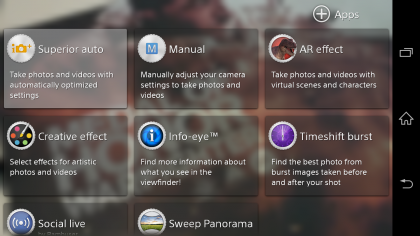
Manual mode lets users select their own white balance options and choose from some present scenes when recording video, which is as far as the manual tinkering goes here.
The Timeshift Burst tool is one that's definitely worth using, as it buffers a stack of shots, letting you leaf through them with a pleasant flipbook effect and choose the best one.

Manual mode lets users select their own white balance options and choose from some present scenes when recording video, which is as far as the manual tinkering goes here.
The Timeshift Burst tool is one that's definitely worth using, as it buffers a stack of shots, letting you leaf through them with a pleasant flipbook effect and choose the best one.
You also get a range of augmented reality comedy features. Select the AR Effect toggle and a variety of computer generated scenes pop up, with the phone's camera locking onto the floor and any faces in shot, and using these to overlay effects atop the image.
It's a bit silly, but kids will love seeing themselves wearing diving helmets and surrounded by fish.

The effects can also be added to the front-facing camera shots for hilarious effect. The fun you will have. Images on this secondary cam come off at 1920 x 1080 resolution, and usually look a lot better and sharper than in this quite terrible low-light example.
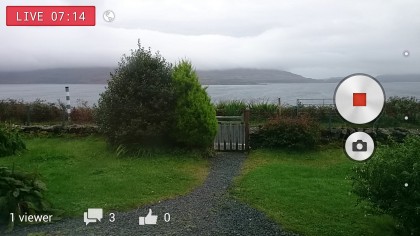
The other clever feature introduced by Sony and exclusive to the Z1 is its Social Live video sharing tool. This lets you share a live video direct to Facebook, which pops up on the social site like any shared clip. You can broadcast up to 10 minutes of live footage direct from the Z1.
Quality depends on the speed of your internet connection, but even at a slightly low frame rate it's a useful tool for beaming images of children to relatives. Clips are also backed up to the Social Live servers, too, so they're rewatchable post-broadcast just like any other clip shared on the site.
Four more additional apps are available to download and add new features to the camera, like Sony's Motiongraph tool, an optional animated image creation plug-in available through Google Play.
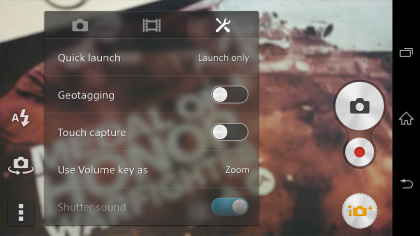
Install this and it appears on the Xperia Z1's options menu, which suggests we'll see more standalone photo apps appear in future. The PhotoShpere tool that ships with stock Android devices like the Nexus 4 is sadly missing, though.
In terms of image quality, the Xperia Z1 is a very competent performer. Outside, in both good and poor light, it does a great job. Movement doesn't trouble it, detail near and far is captured well and colours come across natural and not over or under-saturated.
Sony claims the phone uses the same technology as its separate compacts, and the results are indeed comparable – but only to that of an entry-level compact.
In fact, it manages to perform even better when the light is a bit patchy. Here, the Sony Xperia Z1 coped extremely well with a bright background and dark foreground, activating its Backlit mode to enhance the shady section and combine the two with ease. Great stuff.
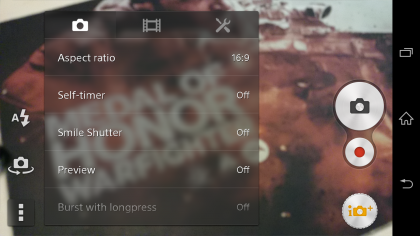
The big problem with the Z1's camera comes when you're indoors. It's so keen to compete with the current crop of superb low-light performers like the HTC One and Nokia's PureView options that it seems to introduce too much noise to its pics.
Even in fairly good indoor light there's some intrusive noise, with odd, bright white pixels appearing over the image. Scale photos down to, say, 500 pixels across, and the white speckled noise is still visible.
The low-light noise issue would appear to have been addressed in Sony's 4.3 update, as I noticed less in the way of white speckles when taking photos indoors. This inside shot's comparable to the one taken last year, and it's clearly less noisy.
Even in ultra-gloomy hotel room interiors the low-level performance is good. Things still get a little noisy is the darker corners, but it appears Sony's engineers have calmed down some of the ISO settings and stopped boosting images quite so aggressively.
And outdoors in good light, the Z1 still does a superb job. It's just as fast to fire off shots, the burst mode's still useful, and results are colourful and clear – although the distance is perhaps not quite as clear of artifacts as it could be.
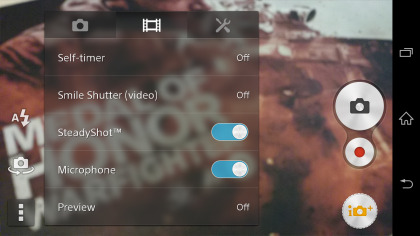
However, the low-light performance is there if you can ignore the noise – although it does annoyingly mean that Sony's claim to have the best camera out there isn't true indoors, putting it behind the likes of the LG G2, Nokia Lumia 1020 and even at times the HTC One.
The Sony Xperia Z1 does work in dingy scenarios though, so at least you get images in situations where other phone sensors might fail.
When it's dark enough indoors to set the flash off, things improve. The background's still a bit noisy, but at least the subjects appear clear and it's not an overly bright flash so no colour is lost.
To access the camera even faster, there's the option to have the Xperia Z1 automatically capture a shot as soon as you open the app, meaning you can unpocket the thing, hold down the shutter button to launch the camera and have a decent image captured within one second.
Finally, there's a built-in photo editor. It's your standard hipster filter and photo framing tool, with a nice pull-down menu that records your edit history, should you go too far with the retro tints and colourations.
If that's not hardcore enough, Sony's also pre-loaded a copy of Pixlr Express, a more complex image manipulation tool.
